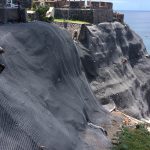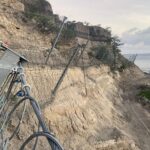
Blasting: controlled rock removal and safety
Rock Blasting: Securing Unstable Zones with Explosives
In our line of work, the precise use of explosives is a highly effective technique for securing unstable rock masses in hazardous areas. Often used in combination with manual purging, blasting becomes the preferred solution in configurations where alternative methods—such as expansive cement or air cushion displacement—prove less effective.
Why Choose Explosives?
Although the use of explosives may seem imposing, it delivers accurate and controlled results through:
-
Detailed Geological Analysis:
- Assessment of rock characteristics (hardness, fissuring, voids, and stratification heterogeneity).
-
Optimal Explosive Selection and Dosage:
- Ensures precise fragmentation (block size) and a controlled dispersal of materials.
-
Blast Sequencing:
- Allows control over shock waves—particularly critical in urban environments or near sensitive infrastructure.
By using controlled blasting, a homogeneous rock mass can be transformed into gravel, without disturbing areas below (e.g., a road), while effectively minimizing uncontrolled projections.
Controlled Blasting in Urban Environments
In urban settings, precision blasting can be executed under strict controls:
- Seismic Wave Limitation: Protects nearby structures by adhering to predefined vibration thresholds.
- Vibration Mitigation: Achieved through minimal explosive charges and optimized blast sequencing.
Professional expertise and precision are essential to ensure safety and success.
Blasting for Excavation: Benches and Road Widening
Explosives are also employed in traditional excavation works, such as:
- Bench Blasting in Quarries.
- Reprofiling and Widening Roadways for infrastructure projects.
Implementation Process: Drilling and Blast Sequencing
-
Drilling a Network of Blast Holes:
- Preliminary drilling for the introduction of explosive charges and detonators.
-
Blast Sequencing:
- To minimize seismic waves and vibration impacts, the blast plan incorporates short delays (typically 25 milliseconds) between detonations.
Example:
- A single blast using 20 charges of 10 kg creates a single seismic event equivalent to 200 kg.
- By introducing a sequenced delay of 25 ms between each charge, the unit load remains at 10 kg, reducing vibrations by a factor of 20.
This level of control ensures an optimal result while mitigating seismic impact, making it ideal for work in sensitive zones.
Experience: The Key to Success
Blasting and excavation projects require extensive expertise and experience. Every site presents unique challenges, and while no method guarantees absolute predictability, success depends on:
- Skilled analysis.
- Meticulous planning.
- A mastery of techniques to deliver precise and reliable results.
Why Choose Acrobat X?
- Mastery of Blasting Techniques: Tailored explosive solutions for rock purging and stabilization.
- Impact Control: Optimized sequencing to limit vibrations and protect surrounding infrastructure.
- Custom Adaptation: Solutions designed based on geological and environmental specifics.
- Guaranteed Safety: Rigorous, risk-free interventions performed to the highest safety standards.
Contact Us
For a comprehensive assessment and customized explosive solutions that meet your project’s unique challenges, trust Acrobat X.
Contact us today to secure your terrain with precision and safety.



